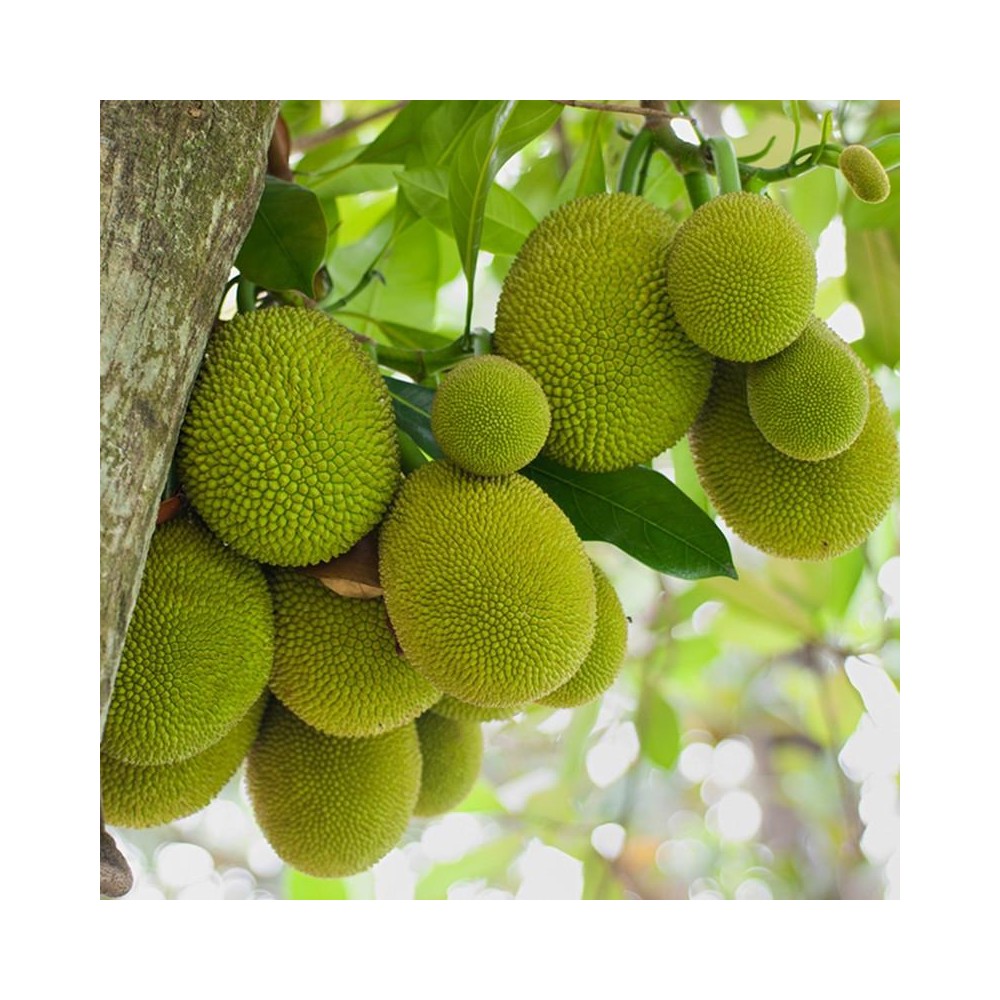



Jackfruit (Artocarpus heterophyllus) is a common village tree cultivated throughout Malaysia. Fruits are available almost throughout the year though the peaks are around June and December. They are a valuable source of carbohydrates with a lesser amount of calcium and phosphate. The pulp of the ripe fruit is eaten fresh or in syrup (preserved). Preserved or canned jackfruit has become increasingly popular, but the production is limited.

Security policy visit http://nurserynature.com/content/10-security-policy

Shipping & Delivery Policy visit http://nurserynature.com/content/1-delivery

Cancellation & Refund Policy visit http://nurserynature.com/content/6-aeu-legal-revocation-terms
Jackfruit (Artocarpus heterophyllus) is a common village tree cultivated throughout Malaysia. Fruits are available almost throughout the year though the peaks are around June and December. They are a valuable source of carbohydrates with a lesser amount of calcium and phosphate. The pulp of the ripe fruit is eaten fresh or in syrup (preserved). Preserved or canned jackfruit has become increasingly popular, but the production is limited. Burkill described the juicy flesh around the seed as "The taste is mawkishly sweet and mousy, agreeable to natives of the East, but not to Europeans". The flavour is of ethyl butyrate. The Malays and Chinese in Malacca candy the fruit. Unripe fruits are used as a vegetable (masak lemak) or in soups and are also pickled. The large seeds are boiled or roasted and have a chestnut flavour. The seeds can also be ground into flour.
Jackfruit Planting & Care
CULTIVAR
As the jackfruit has been traditionally propagated from seeds, there is a wide variation in productivity and in fruit size, shape and quality, as well as in the fruiting season. Two main types are recognised (1) "Nangka Belulang" with firm flesh and (2) "Nangka Bubur" with soft flesh.
A few cultivars are known or exploited in Malaysia. A greater research effort is needed to catalogue existing cultivars and to build up stocks of desirable clonal material.
The jackfruit variety under observation is the cultivar Negeri Sembilan Satu. NS 1 is the cultivar selected for processing and it is hoped that with further husbandry improvements, the acreage of jackfruit in Malaysia will expand to meet the development of the fruit processing industry.
SOIL
Although the jackfruit is essentially a tree of the tropical lowlands, it is adapted to a wider range of conditions. It can tolerate higher altitudes and cold better than the breadfruit.
The jackfruit can be grown on a variety of soils as long as they are well-drained, but does best in deep alluvial soils of open texture. Most of the trees grown in Trengganu and Pahang are on the Holyrood series.
PROPAGATION
The most common and simplest method of raising jackfruit trees is from seeds, though other methods are also known in Malaysia. The trees do not generally breed true from seeds, so the practice has led to immense variation in yields, fruit characters and quality. Inarching and grafting by the Forkert Method is known in Malaysia as a means of perpetuating desirable clonal stocks.
PLANTING
The place chosen for the planting should be first cleared from old tree stumps and old roots to avoid termites and root disease. When necessary, the soil should be ploughed first, then rows are made to mark the planting intervals. Usually, jackfruits are planted at a distance of 30 ft. x 30 ft. In an acre, 48 trees can be planted. In a new area the planting interval can be reduced to 25 ft. x 25 ft., and 69 trees can be planted in an acre.
Planting holes of 2 ft x 2 ft x 2 ft., should be prepared, and top soil with 4 oz. CIRP should be added into each hole. For not every fertile soils, it is advisable to add 40 lbs. of cowdung to the top soil. Usually the planting holes are left open for fourteen (14) days before they are filled up again, and only then is the budgrafted jackfruit tree planted. It is important to remember that during planting, the bud patch is not to be covered with soil. It would otherwise cause the bud patch to rot and die. The amount of sunlight can be reduced by using shade from coconut fronds. Usually, bud-grafted trees are planted during the rainy season so that they do not have to be watered. Since watering is quite a problem in large scale cultivation, planting should be done when there is rain in order to make sure that tne plants can grow well. This is important to prevent the plants from being stunted. Shading from the coconut fronds can be removed after two weeks if the weather is fine. Otherwise, it should be left for another week or more.
For sandy soil and clay soil or the Holyrood series, legumes are required as cover crops. Calopogonium, Centrosema and Pueraria in a ratio of 5:4:1 are usually used. Cover crops are required to prevent weeds from growing, to alter the condition and fertility of the soil and also to prevent the soil from becoming too hot especially in bris areas.
FERTILIZER A consistent, well-balanced manurial programme is important so as to stimulate rapid growth in young trees and to ensure maximum yield when the plants